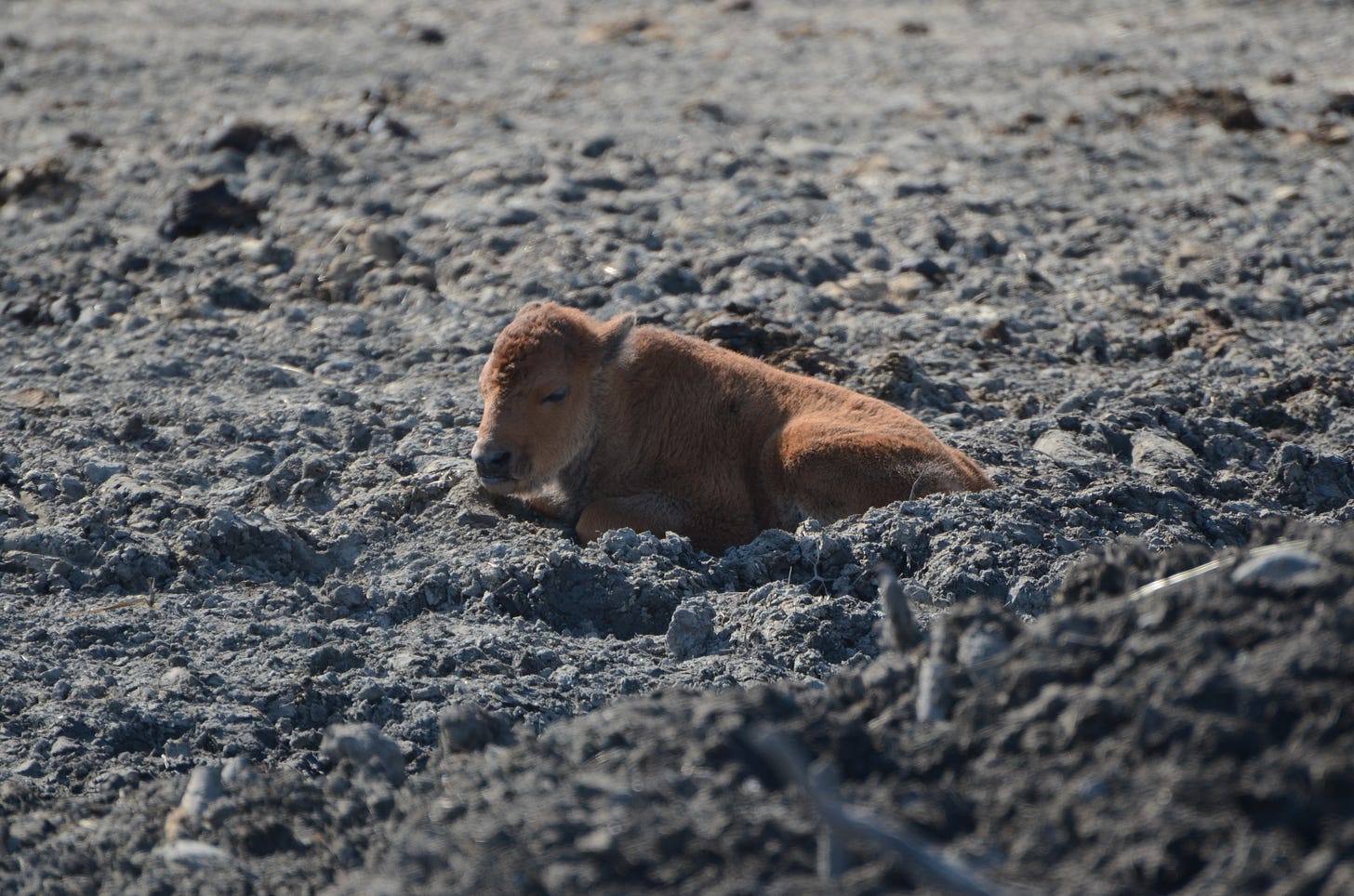By Jordan Schaul | National Geographic | May 27, 2012
Have you been following any bison news lately?
The State Mammal of Oklahoma, Wyoming, and Kansas may become the National Mammal to the dismay of some marine mammal fans, a contingent of cattle ranchers, and some other anti-bison folks.
This hasn’t stopped the Bronx Zoo-based Wildlife Conservation Society, the Intertribal Buffalo Council, or the National Bison Association from sponsoring legislation, which was recently introduced to Congress by legislators from Western states.
The “Vote Bison” marketing campaign was launched to coincide with the introduction of the National Bison Legacy Act. The legislation provides no more protection for the plains bison or the wood bison, which will soon be reintroduced to Alaska, nor will it replace the bald eagle—the country’s national emblem. What it will do is recognize the cultural icon and keystone grazing herbivore, which once roamed the contiguous 48 states and numbered in the millions. Considered long overdue, the bill will honor a symbolic species, which also happens to be the largest land mammal in the Western Hemisphere.
Once seen all over the North American landscape, the bison, now numbering around 20,000, exist in conservation and commercial herds—many of which are impure with hybrid genes from domestic cattle. The buffalo have made quite a comeback considering they were once on the verge of extinction, but many feel they have a ways to go in respect to the conservation of the species.
Although some ranchers perceive bison to be a threat to their livelihood, bison are an integral part of the ecosystems they are a part of and their mere existence on the plains offers an intrinsic value that can not be denied. The perception of livestock managers is that these enormous bovids tear down fences, spread bovine diseases, and compete with domestic cattle for forage, but they are critical to ecological restoration initiatives. They shape habitats and ultimately increase biodiversity; they promote nutrient cycling and could provide a great source of food for subsistence hunters, among other benefits.
In recent years, government wildlife agencies, tribal groups, and wildlife conservationists have revisited opportunities to restore bison to the wild, while other groups have attempted to display captive bison for public viewing within the animals’ historic range. For instance, Ted Turner recently offered to donate a small herd for viewing along Highway 36 between Davidson Mesa and Boulder, Colorado.
ABOUT NATIONAL GEOGRAPHIC SOCIETY
The National Geographic Society is a global nonprofit organization that uses the power of science, exploration, education and storytelling to illuminate and protect the wonder of our world. Since 1888, National Geographic has pushed the boundaries of exploration, investing in bold people and transformative ideas, providing more than 14,000 grants for work across all seven continents, reaching 3 million students each year through education offerings, and engaging audiences around the globe through signature experiences, stories and content. To learn more, visit www.nationalgeographic.org or follow us on Instagram, Twitter and Facebook.
MEET THE AUTHOR
Jordan Carlton SchaulWith training in wildlife ecology, conservation medicine, and comparative psychology, Dr. Schaul's contributions to Nat Geo Voices have covered a range of environmental and social topics. He draws particular attention to the plight of imperiled species highlighting issues at the juncture or nexus of sorta situ wildlife conservation and applied animal welfare. Sorta situ conservation practices are comprised of scientific management and stewardship of animal populations ex situ (in captivity / 'in human care') and in situ (free-ranging / 'in nature'). He also has a background in behavior management and training of companion animals and captive wildlife, as well as conservation marketing and digital publicity. Jordan has shared interviews with colleagues and public figures, as well as editorial news content. In addition, he has posted narratives describing his own work, which include the following examples: • Restoration of wood bison to the Interior of Alaska (As Animal Curator at Alaska Wildlife Conservation Center and courtesy professor at the University of Alaska) • Rehabilitation of orphaned sloth bears exploited for tourists in South Asia (As executive consultant 'in-residence' at the Agra Bear Rescue Center managed by Wildlife SOS) • Censusing small wild cat (e.g. ocelot and margay) populations in the montane cloud forests of Costa Rica for popular publications with 'The Cat Whisperer' Mieshelle Nagelschneider • Evaluating the impact of ecotourism on marine mammal population stability and welfare off the coast of Mexico's Sea of Cortez (With Boston University's marine science program) Jordan was a director on boards of non-profit wildlife conservation organizations serving nations in Africa, North and South America and Southeast Asia. He is also a consultant to a human-wildlife conflict mitigation organization in the Pacific Northwest. Following animal curatorships in Alaska and California, he served as a charter board member of a zoo advocacy and outreach organization and later as its executive director. Jordan was a member of the Communication and Education Commission of the International Union for the Conservation of Nature (CEC-IUCN) and the Bear Specialist Group of the IUCN Species Survival Commission (BSG-SSC-IUCN). He has served on the advisory council of the National Wildlife Humane Society and in service to the Bear Taxon Advisory Group of the Association of Zoos and Aquariums (AZA Bear TAG). In addition, he was an ex officio member of the council of the International Association for Bear Research and Management.



